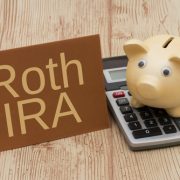The Beginner’s Guide to Private Note Investing in a Self-Directed IRA
Private note investing is a popular and potentially profitable option for investors looking to diversify their portfolio. After all, it’s different than the traditional retirement investments like stocks and bonds. That means you can use it to broaden your portfolio while still enjoying the tax protections that come from retirement accounts. And when it comes to retirement savings, a Self-Directed IRA can be a powerful tool for taking advantage of this investment strategy.
In this beginner’s guide, we’ll explore the basics of private note investing within a Self-Directed IRA and how it can help you reach your retirement goals.
The Benefits of Private Note Investing in a Self-Directed IRA
With a Self-Directed IRA, you have the flexibility to invest in a wide variety of assets beyond traditional stocks, bonds, and mutual funds. One of these options is private notes. “Private notes” is another term for loans made to individuals or businesses in exchange for interest payments. When you issue a note, you become the lender—and you can start collecting payments like a lender.
One of the key benefits of investing in private notes within a Self-Directed IRA is the potential for high returns. Private notes can offer higher interest rates than traditional fixed-income investments, which can boost your retirement savings over time. Additionally, private notes can be secured by collateral, such a real estate, which can provide an extra layer of protection for your investment.
Another benefit of private note investing in a Self-Directed IRA is that it can diversify your portfolio. By adding private notes to your retirement savings mix, you can spread your risk across multiple asset classes and potentially reduce your overall exposure to market volatility.
What to Consider Before Investing
As with any investment strategy, you should perform due diligence before diving in. Here are some key considerations to keep in mind when investing in private notes within a Self-Directed IRA:
- Risk: While private notes can offer high returns, they can also be risky. If the borrower defaults on the loan, you could lose some or all of your investment. Be sure to thoroughly vet the borrower and evaluate the collateral securing the loan before investing.
- Fees: Investing in private notes within a Self-Directed IRA may come with additional fees, such as origination fees or servicing fees. Be sure to understand these fees before making any investment decisions.
- Liquidity: Private notes are generally illiquid investments, meaning it can be difficult to sell them quickly if you need to access your funds. Be sure to have a solid understanding of your liquidity needs before investing in private notes.
Getting Started with Private Note Investing in a Self-Directed IRA
To invest in private notes within a Self-Directed IRA, you’ll need to open an account with a Self-Directed IRA custodian, such as American IRA. From there, you can fund your account and start exploring private note investment options.
When choosing private notes to invest in, it’s important to do your research and choose borrowers and loans that align with your investment goals and risk tolerance. You may also want to work with a financial advisor or investment professional to help guide your decisions.
Private note investing can be a lucrative option for investors looking to diversify their portfolios and boost their retirement savings. And with a Self-Directed IRA, investors can take advantage of this strategy while enjoying the flexibility and control that comes with a self-directed retirement account.
Interested in learning more about Self-Directed IRAs? Contact American IRA, LLC at 866-7500-IRA (472) for a free consultation. Download our free guide or visit us online at www.AmericanIRA.com.











